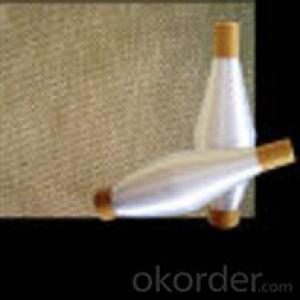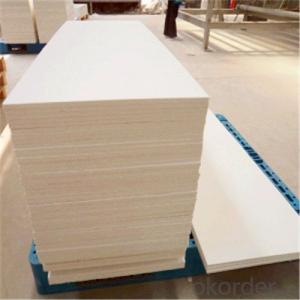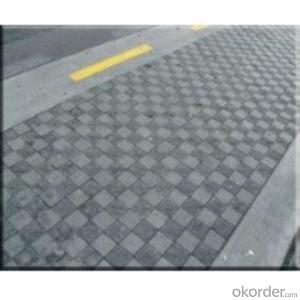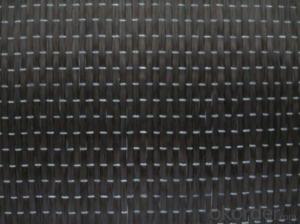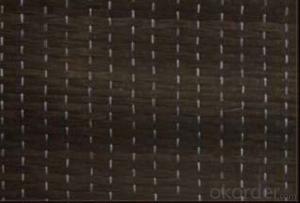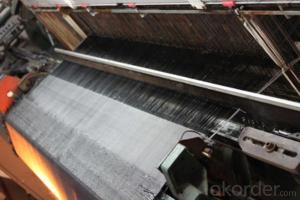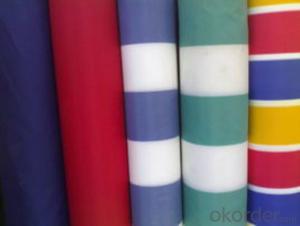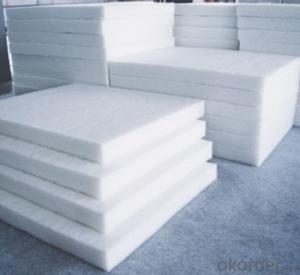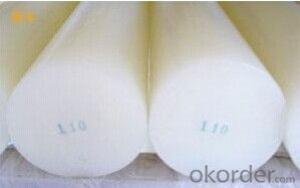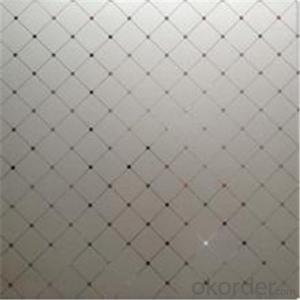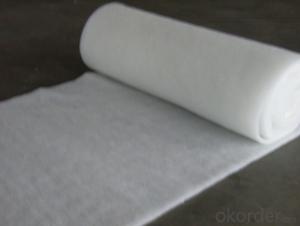Heat Insulation ceramic fiber textile
- Loading Port:
- Shanghai
- Payment Terms:
- TT OR LC
- Min Order Qty:
- 10 m.t.
- Supply Capability:
- 100 m.t./month
OKorder Service Pledge
OKorder Financial Service
You Might Also Like
Quick Details
| Type: | Twisted Rope | Application: | Heat Insulation | Thickness: | 4-60mm |
| Width: | 4-60mm | Length: | 30m | Grade: | HA (High Aluminum) |
| Chemical Composition: | AL2O3+SIO2 | Ultimate Strength (≥ MPa): | 0.04 | Working Temperature: | 1260 |
| Fiber Diameter: | 2-5um | Thermal Conductivity: | 0.075-0.175 w/m.k | Shrinkage (1800℉, 3h): | <=-3 |
| Place of Origin: | China (Mainland) | Brand Name: | Model Number: | HA-ceramic fiber rope | |
| Color: | White |
Packaging & Delivery
| Packaging Detail: | carton with inner plastic bag |
| Delivery Detail: | 15days after receiving advance payment |
Specifications
Heat Insulation high temperature ceramic fiber textile
professional factory
ceramic round/square/twisted rope
MSDS ISO9001
Heat Insulation Ceramic Fiber Rope
About Ceramic Fiber Rope
Iterm | Ceramic fiber rope |
Type | Ceramic fiber twisted rope |
Ceramic fiber square braided rope | |
Ceramic fiber round braided rope | |
Characteristics | ** Good thermal insulation |
** Excellent high temperature strength | |
** Good electrical insulation properties | |
** High chemical stability | |
** Low thermal conductivity | |
Typical Use | Hightemperature pipe insulation and seal, cable insulationcoating, flexible expansion joint connection,coke oven opening seal |
MOQ | 1m |
FOB Price | 4-6.5 USD/KG |
Port | Qingdao |
Payment Terms | L/C, D/A, D/P, T/T |
Packing | Carton with inner plastic bags |
Delivery | Within 15 days after delivery deposit |
Certificate | ISO9001, MSDS |
- Q:What are the different types of glass fibers used in textiles?
- The different types of glass fibers used in textiles include E-glass, S-glass, C-glass, and A-glass. Each type has different properties and characteristics that make them suitable for specific applications.
- Q:Are glass fiber textiles resistant to staining or discoloration?
- Glass fiber textiles are known for their ability to resist staining and discoloration. Due to the non-porous nature of the material, liquids and other substances are unable to be absorbed, making it challenging for stains to penetrate the fabric. Moreover, chemical finishes are often applied to glass fiber textiles in order to enhance their resistance against stains. These finishes create a protective barrier that repels liquids and prevents stains from becoming embedded. Consequently, glass fiber textiles have a lower likelihood of becoming discolored or stained when compared to alternative fabric options.
- Q:Can glass fiber textiles be used in soundproofing?
- Glass fiber textiles have the ability to be utilized in soundproofing. Recognized for their exceptional sound absorption qualities, glass fiber textiles are an ideal material for soundproofing endeavors. They effectively diminish the transmission of sound waves by absorbing and dispersing energy. Glass fiber textiles can be employed in a variety of soundproofing applications, such as wall panels, acoustic ceiling tiles, acoustic curtains, and insulation materials. By absorbing sound waves and preventing them from rebounding off solid surfaces, they effectively lower noise levels within a room, thus creating a more tranquil environment. Moreover, glass fiber textiles are lightweight, easy to install, and provide thermal insulation, making them a versatile option for soundproofing purposes.
- Q:Can glass fiber textiles be used for making reinforcement materials in construction?
- Glass fiber textiles, also referred to as fiberglass textiles, have the capability to be utilized as reinforcement materials for construction purposes. These materials possess strength and durability, making them suitable for reinforcing concrete, plaster, and composites. They exhibit a high tensile strength and are resistant to corrosion, which renders them ideal for situations where additional strength and durability are necessary. In the construction industry, glass fiber textiles are commonly employed to provide reinforcement in diverse forms like mesh, mats, and fabrics. These textiles are typically crafted by interweaving or knitting thin strands of glass fibers together, resulting in a flexible and versatile material that can be easily incorporated into construction projects. When utilized as reinforcement materials, glass fiber textiles aid in improving the structural integrity and load-bearing capacity of construction elements. They augment resistance to cracking, bending, and impact, thereby extending the lifespan of the construction project. Moreover, glass fiber textiles possess non-combustible properties and offer commendable thermal insulation, which makes them suitable for applications that prioritize fire resistance and energy efficiency. In conclusion, glass fiber textiles are widely recognized as effective reinforcement materials in the construction field due to their exceptional strength, durability, and versatility. Their utilization enhances the performance and longevity of diverse construction elements, making them a valuable addition to the industry.
- Q:Can glass fiber textiles be used as insulation material?
- Glass fiber textiles, or fiberglass, possess exceptional thermal and acoustic insulation properties, making them suitable for insulation applications. By weaving or knitting fine strands of glass, these textiles are created, which have the ability to effectively prevent heat transfer between surfaces. This quality makes them ideal for insulating buildings, pipes, and other structures, while also providing an additional layer of safety due to their fire resistance. Moreover, glass fiber textiles are lightweight, flexible, and easy to install. Their versatility allows them to be easily cut and shaped to fit any space or object, catering to various insulation needs. Additionally, they exhibit durability and longevity, showcasing high resistance against moisture, chemicals, and pests. In summary, glass fiber textiles are widely favored for insulation purposes due to their thermal performance, fire resistance, adaptability, and sturdiness.
- Q:Are glass fiber textiles recyclable?
- Yes, glass fiber textiles are recyclable. They can be broken down and used to make new products, reducing waste and promoting sustainability.
- Q:What are the different surface coating methods for glass fiber textile?
- Some common surface coating methods for glass fiber textiles include dip coating, spray coating, roll coating, and curtain coating. These methods involve applying a liquid coating material onto the surface of the glass fiber textile to enhance its properties such as resistance to water, chemicals, and abrasion.
- Q:How does glass fiber textile perform in terms of gas permeability?
- Glass fiber textile has low gas permeability, meaning that it provides a barrier against the passage of gases.
- Q:How do glass fiber textiles affect sound absorption?
- Sound absorption can be significantly impacted by glass fiber textiles. These textiles are adept at trapping and dissipating sound waves due to their porous and fibrous nature. When sound waves encounter glass fiber textiles, they pass through the air gaps between the fibers, causing the fibers to vibrate. This vibration converts sound energy into heat energy, effectively reducing the intensity of the sound waves. The fibers in glass fiber textiles are randomly arranged, resulting in a complex network of pathways for sound waves to travel through. This increases the likelihood of sound absorption. Furthermore, the fibers' large surface area provides ample opportunities for sound waves to interact and be absorbed. Glass fiber textiles possess the added advantage of being lightweight and flexible, making them suitable for various applications in sound insulation and acoustic treatment. They can be easily installed on walls, ceilings, or other surfaces to enhance sound absorption and reduce reverberation in a room. In summary, glass fiber textiles are highly effective at absorbing sound due to their porous structure, vibration properties, and ability to create a complex network for sound wave dispersion. They offer exceptional acoustic performance and are commonly utilized in industries such as construction, automotive, and music studios.
- Q:Can glass fiber textiles be used in the production of composites?
- Yes, glass fiber textiles can be used in the production of composites. Glass fibers are strong, lightweight, and have excellent mechanical properties, making them ideal for reinforcing composite materials. They are commonly used in industries such as aerospace, automotive, and construction to enhance the strength and durability of composite structures.
1. Manufacturer Overview |
|
|---|---|
| Location | |
| Year Established | |
| Annual Output Value | |
| Main Markets | |
| Company Certifications | |
2. Manufacturer Certificates |
|
|---|---|
| a) Certification Name | |
| Range | |
| Reference | |
| Validity Period | |
3. Manufacturer Capability |
|
|---|---|
| a)Trade Capacity | |
| Nearest Port | |
| Export Percentage | |
| No.of Employees in Trade Department | |
| Language Spoken: | |
| b)Factory Information | |
| Factory Size: | |
| No. of Production Lines | |
| Contract Manufacturing | |
| Product Price Range | |
Send your message to us
Heat Insulation ceramic fiber textile
- Loading Port:
- Shanghai
- Payment Terms:
- TT OR LC
- Min Order Qty:
- 10 m.t.
- Supply Capability:
- 100 m.t./month
OKorder Service Pledge
OKorder Financial Service
Similar products
New products
Hot products
Hot Searches
Related keywords
